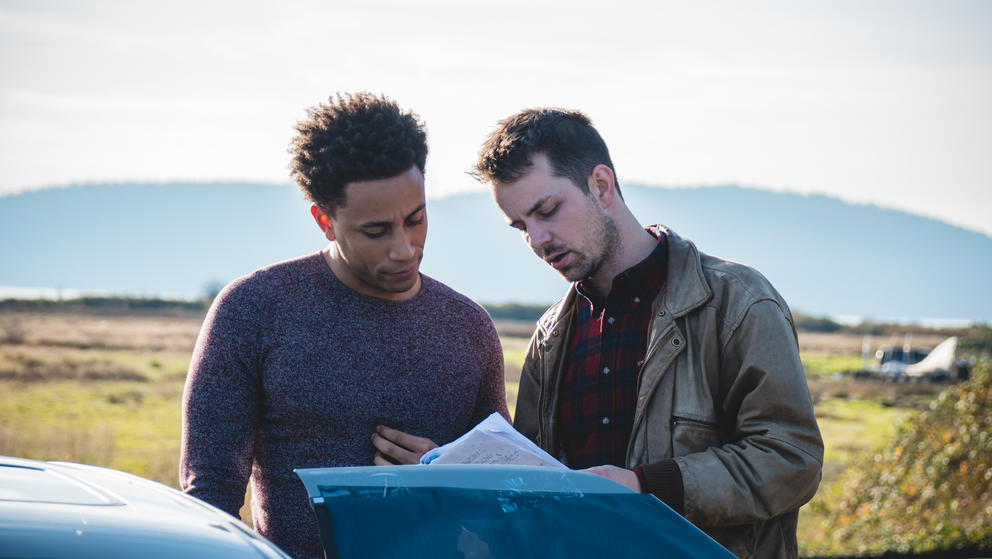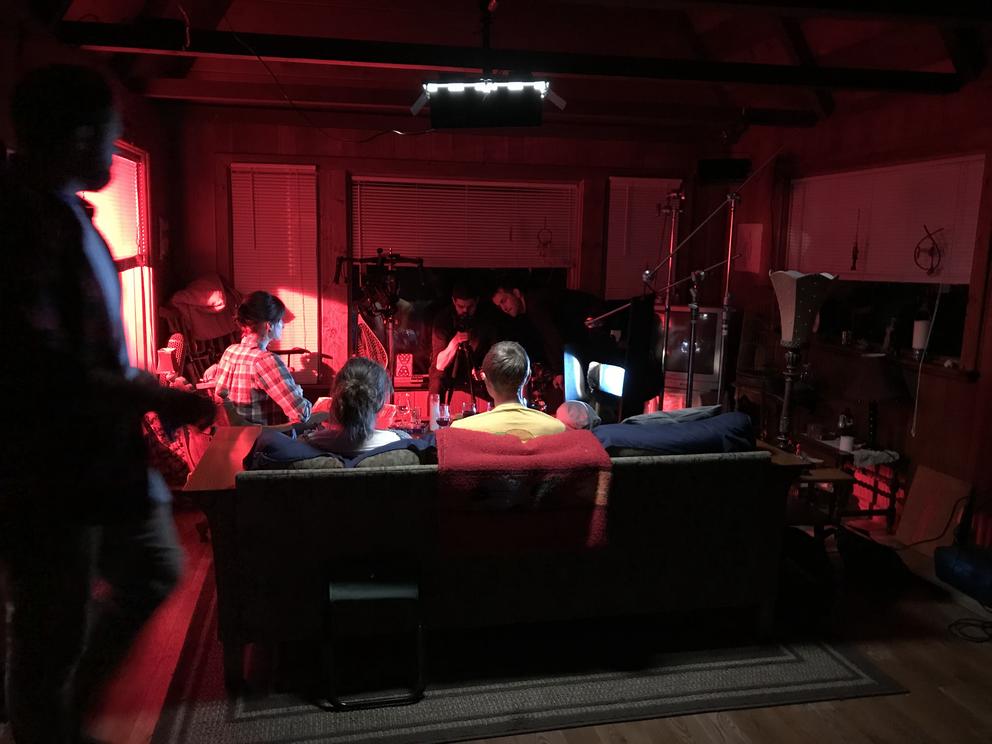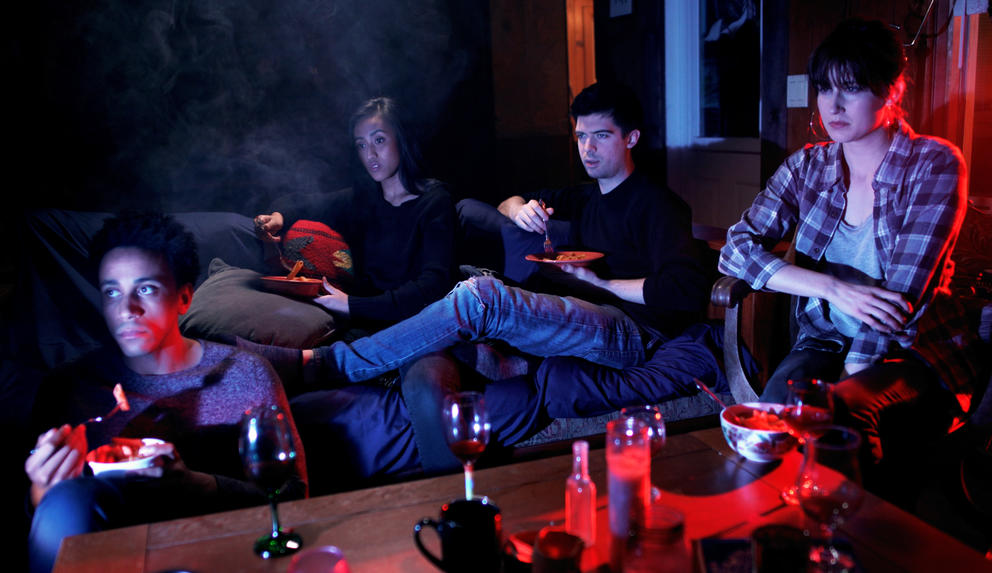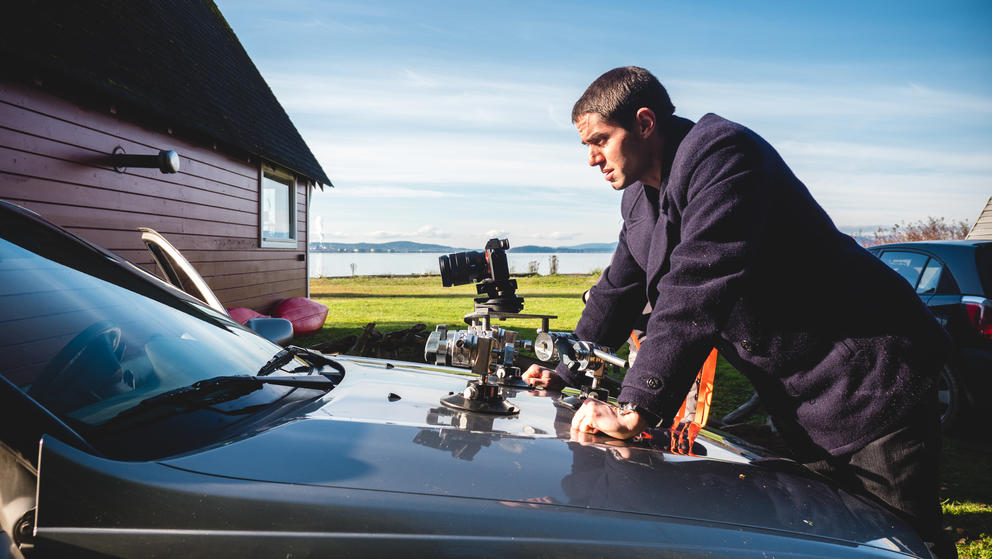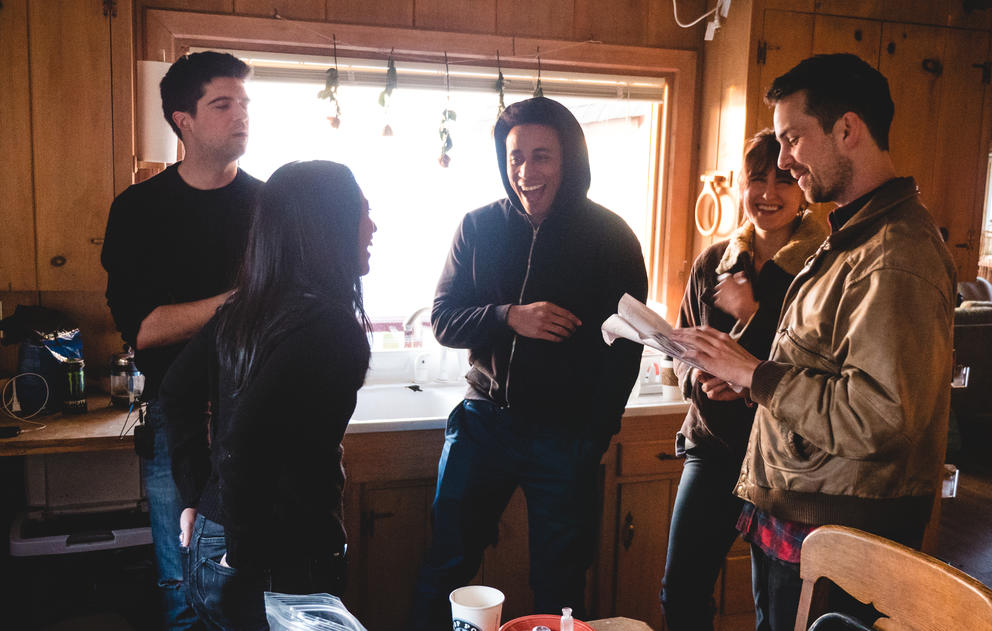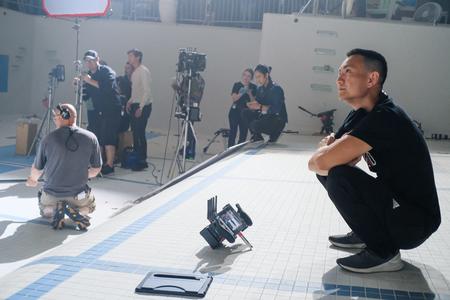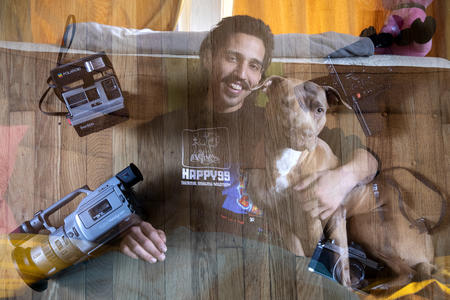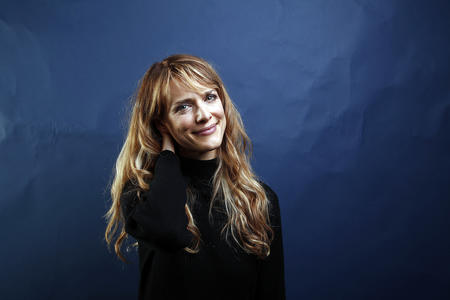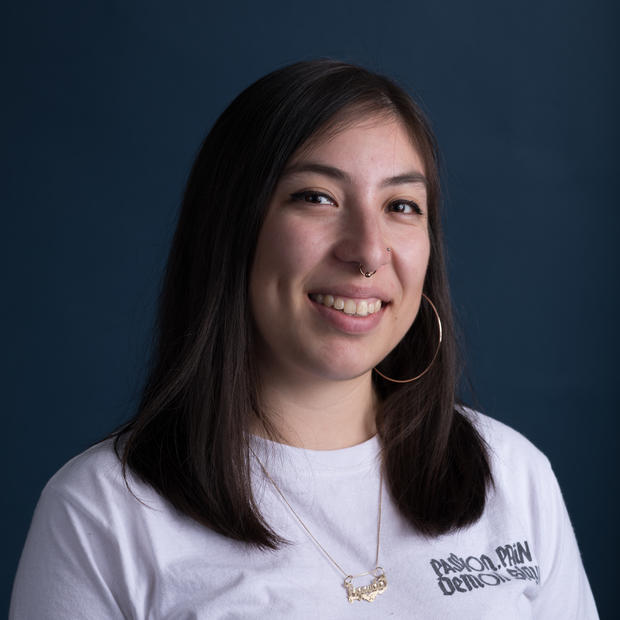“We were filming out on a beach, on this huge wet mudflat that seemed to stretch on for a mile,” Thompson recalls. As the sky darkened, the rain poured and the tide ebbed.
“Our lights started shorting out and then the power went out,” Thompson says. “One of the lead actors was walking back [to the beach house set] and suddenly the power came back — all the lights in the house — and he was like, ‘I'm getting the fuck out of Skagit!’ and ran back to the car.”
But similar to the plot of Skagit, the horror arose largely from the Pacific Northwest’s dreary and dark atmosphere, which has a way of seeping inside your head.
Set and filmed entirely in the Skagit Valley, the dreamlike, nonliteral horror feature follows four 20-something Seattleites who take off to a cabin in a quasi-rural area and quickly start to panic in the near isolation. (Sound familiar?)
Skagit is Thompson’s first horror film, drawn largely from his experiences growing up in Seattle. He began writing the script while living in New York City in 2015 and finished it after relocating to Port Angeles in 2017. Now back in Seattle, he never imagined the premise of the movie would feel so relevant in this moment.
The 28-year-old director was raised in Seattle’s south end by parents who are both documentary filmmakers and authors (Ann Hedreen and Rustin Thompson), and graduated from Evergreen State College with a degree in art history. His past works include a handful of short films, a music video and Douglas Fern’s Fact File, a mockumentary web series about Seattle’s rapid development.
Since COVID-19 closures ended Thompson’s day jobs (working at Full Tilt Ice Cream and hosting trivia nights at The Backyard), he has used the time to focus on finishing Skagit. The film is currently in post-production, after an Indiegogo campaign raised more than $18,000 to help pay the cast and crew. Thompson will finish editing early next year, and plans to enter Skagit into the film festival circuit.
With nights getting longer, and coronavirus isolation stretching on, it feels like we’re already ensconced in Skagit. In the same way, Thompson’s film mirrors one of its inspirations: Edgar Allan Poe’s The Fall of the House of Usher, in which a slowly decaying mental state is echoed by the gloom.
This interview has been edited for length and clarity.
What is at the core of Skagit’s horror?
I wanted to highlight that the characters are in this alternate reality, inside their own heads and losing their minds rather than the threat being they are so physically isolated that help is impossibly far away. You feel the presence of people and possibly other things around, but don't see them — they're always kind of in the distance, just out of reach or on the periphery.
Fifty locations were scouted and 24 were used. What were you looking for?
It started with the Skagit Valley itself. I was familiar with it, but only in the sense of passing through it as a kid. I felt Skagit Valley was like a lot of Western Washington: very beautiful, but also a little depressing at times. Skagit Valley seems a little creepier and darker just by its soggy nature. And I didn't want these characters totally isolated in the middle of nowhere. I thought it was more interesting to have it be a place that's close to the city, but also has that rural wilderness. Back in New York, I was trying to look up stories about the Skagit Valley ghost towns or places that supposedly were haunted.
Did you learn about any interesting history or haunted places?
I learned that a bunch of geese come and winter in the Skagit Valley. These snow geese come from Siberia — thousands of them — and land in this place called Fir Island in the Western part of the valley. That became an idea for a place that the characters would go and explore.
Skagit echoes the isolation that came with the pandemic, but also hints at how Seattleites are seen as already socially distant in general. Was that intentional?
I'd already been editing it when the whole pandemic started. I definitely heard people saying how in Seattle people are already socially distanced from each other and are more used to being alone and indoors than in other places. I don't think that's totally true, but I think that sensibility does relate to the worlds of the characters in the movie.
How is the Northwest sense of place reflected in Skagit?
I think a lot of people here — especially people who grow up here — have this connection or bond to the natural environment, in a way that people maybe don't as much in other cities. Being part of the climate and the geography is an important part of your experience.
And then also, people in Seattle have this anxiety about change — this upheaval with the city changing and gentrifying so fast. Sometimes feeling out of place in their own home, a little bit unsure of where they fall. The characters of the movie are middle-class kids from Seattle. They're not being pushed out as much as some people might be, but they also don't really feel like they fit in with the way the city's going.
Who are your horror filmmaker inspirations?
One person that comes to mind is contemporary director Ana Lily Amirpour, who did A Girl Walks Home Alone at Night. It was this Iranian vampire spaghetti western, [which] she crowdfunded. She went on to do another movie, The Bad Batch. Another is Krzysztof Kieślowski, this Polish director who made a lot of films where there is this undefined magic that hangs around the characters.
Do you have a favorite Halloween-season movie?
The Halloween Tree. It's a Cartoon Network TV movie from the early ’90s for children, based on the Ray Bradbury book. It's got some of the most quintessential small-town, Halloween fall spirit, so to speak. A favorite — and also an inspiration for Skagit — is The Fall of the House of Usher, a silent film by Jean Epstein from 1928 [based on] Edgar Allen Poe's story.
How do you see social distancing measures affecting filmmaking?
With all the necessary safety precautions, there's a lot of barriers to making any sort of conventional narrative feature film with bigger casts and crews. I hope this will help more smaller regional films get made. At any level you have to be safe, but obviously if it's just a few people that are already close to each other, it might be possible to make a movie in your hometown or backyard.
Do you think about your own art differently now?
So much of shooting a low-budget movie is problem solving and constantly working with a new reality. “Oh, we don't actually have that money” or “We don't have that actor or that location.” That's very small compared to dealing with a pandemic, but a lot of low-budget filmmakers become good at staying driven towards their goals, despite new circumstances.
Is there a place that’s been a respite for you during the pandemic?
My neighborhood became very important. I work from home, so I go on a lot of walks while listening to music. It used to be just me and the old people out, now it's everyone going on walks. If I had to choose one park, it would probably be Seward Park, which I grew up really near and has always, but especially during the pandemic, been there for me.
Fill in the blank: The year 2020 will go down as the year in which Seattle’s arts and culture scene…..
Experiences a rebirth. There will be new things springing up that could not have been predicted, which is great. Especially since people spend so much of their time here looking at what's going away and what we're losing, which I've been guilty of as well.
If you had to pick one artwork that encapsulates 2020, what would it be and why?
This low budget sci-fi movie that my dad actually made called Pathogen [from 2009]. I watched it again the other day. It has to do with a virus driving humanity underground. After making it many years ago, he brought it back to life once the COVID pandemic began, making some changes, some cuts and additions. He's currently submitting it to film festivals.
Do you think the coronavirus measures have changed the way people value art?
I hope it reinforces the idea of how essential art is. I would describe art as intrinsic rather than just important. I don't really think that we can live without it. A lot of people are [suddenly] very aware of how many artistic and cultural events were extremely important to them. I hope that we can adapt and be as happy as possible at home, but not forget the importance of art.
Get the latest in local arts and culture
This weekly newsletter brings arts news and cultural events straight to your inbox.

